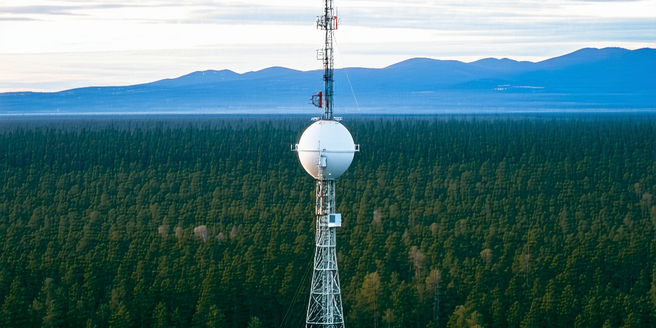
Understanding Infrared Technology
Infrared technology plays a crucial role in meteorology by capturing the heat emitted by objects, which provides insights into various weather phenomena. Unlike visible light, infrared radiation can penetrate clouds, allowing meteorologists to observe weather patterns and gather crucial data, even in obscured conditions. This capability is particularly beneficial during nighttime observations when visible light is inadequate. This spectral range is essential for detecting temperature variations, helping scientists understand atmospheric dynamics and energy exchanges. By analyzing infrared data, meteorologists can differentiate between different types of clouds, assess moisture levels, and study land and sea surface temperatures. The ability to measure emitted heat enhances weather predictions and furthers climate understanding. Thus, understanding infrared technology is vital for advancing meteorological research and improving weather forecasting accuracy.
The Role of Infrared in Weather Forecasting
Infrared technology significantly enhances the accuracy of weather forecasts by allowing for detailed observation of atmospheric conditions. By detecting heat emissions from the Earth’s surface and atmosphere, infrared sensors provide vital data on temperature variations and cloud formations. This information helps meteorologists track storm development, precipitation patterns, and temperature gradients. Infrared data is invaluable in identifying the intensity and movement of weather systems, such as hurricanes and cold fronts, increasing predictability. The ability to observe weather even in darkness or through cloud cover makes infrared indispensable for accurate and timely forecasts. Advances in this technology will continue to refine forecasting models and aid in early warning systems, ultimately safeguarding lives and property.
Infrared Satellites and Their Impact on Meteorology
Infrared satellites have revolutionized meteorology by providing comprehensive data on atmospheric phenomena and surface conditions. Equipped with advanced infrared sensors, these satellites continuously monitor energy emitted from the Earth, offering crucial insights into temperature distributions and cloud dynamics. Such data help meteorologists track storm systems, assess moisture levels, and study large-scale climatic events. Infrared imagery allows for precise identification of differing atmospheric layers and their respective temperatures, enhancing our understanding of weather patterns. The deployment of these satellites has improved long-term weather modeling and real-time monitoring, resulting in more accurate storm forecasts and climate predictions. With ongoing technological advancements, infrared satellites continue to expand their role in global meteorological efforts, contributing significantly to our understanding of weather and climate.
Advantages of Using Infrared in Climate Studies
Infrared technology offers significant advantages for climate studies, providing comprehensive data on atmospheric and surface temperatures. By analyzing heat emissions, scientists can study the Earth’s thermal structure and energy exchanges, critical for addressing climate change inquiries. With the rising concerns about climate change, utilizing advanced tools like infrared technology becomes increasingly crucial. Infrared observations aid in quantifying oceanic and atmospheric heat balances, identifying trends in global warming. This technology also enables researchers to investigate cloud behaviors and their effects on weather systems. The ability to monitor climate phenomena over time provides invaluable insights into natural climate variability and human-induced changes. Infrared’s capacity to produce precise temperature measurements, even in challenging conditions, makes it indispensable for climate research and helps develop informed strategies to mitigate environmental impacts.
Future Innovations in Infrared Meteorology
Future innovations in infrared meteorology promise to further enhance weather prediction capabilities and climate understanding. Emerging technologies aim to increase the precision and range of infrared sensors, enabling more detailed observations of atmospheric processes. Developments in satellite technology will provide more frequent and higher-resolution data, improving real-time monitoring of weather events. Advanced modeling techniques, combined with infrared data, are expected to refine storm prediction models and early warning systems. Additionally, integrating machine learning algorithms could enhance data analysis, leading to improved forecasting accuracy. As research progresses, these innovations will unlock new possibilities in studying global weather patterns, climate change, and environmental influences, ultimately supporting disaster readiness and resilience in a rapidly changing world.
